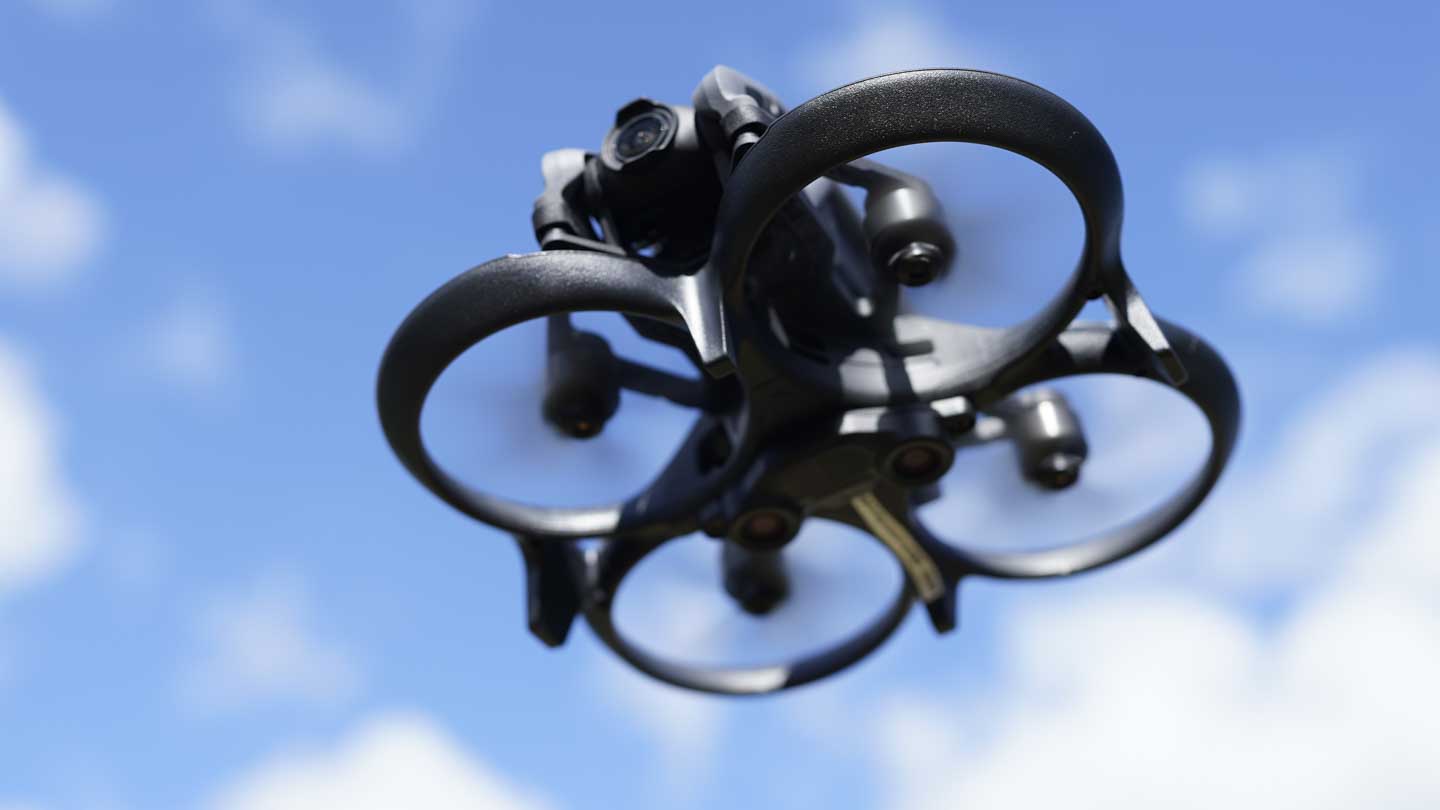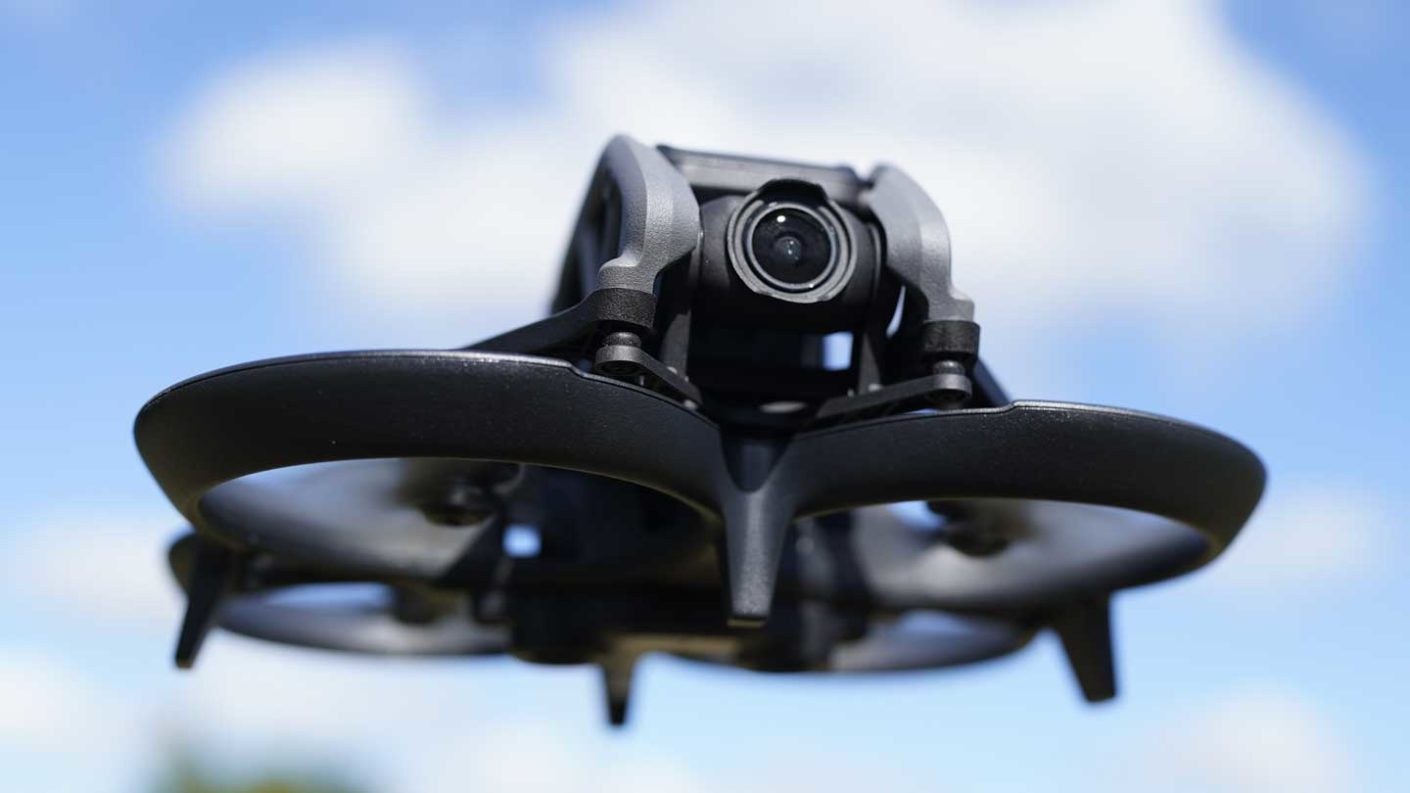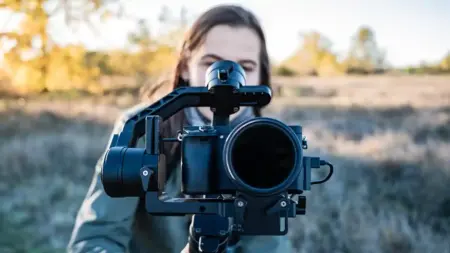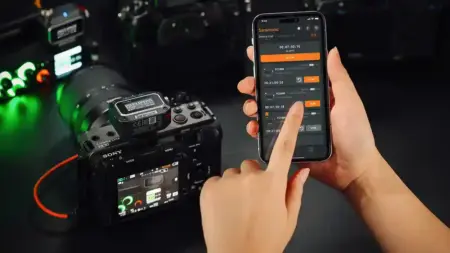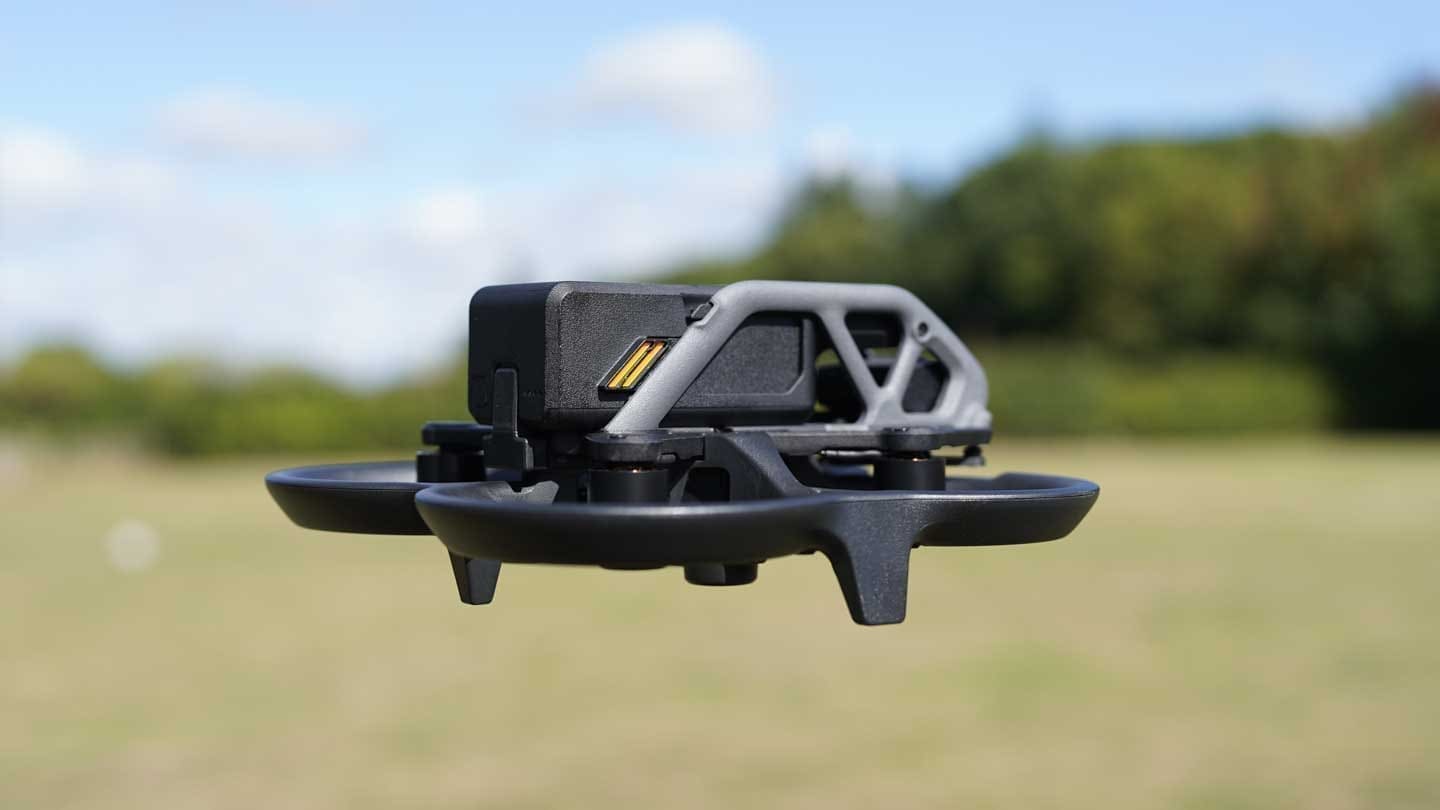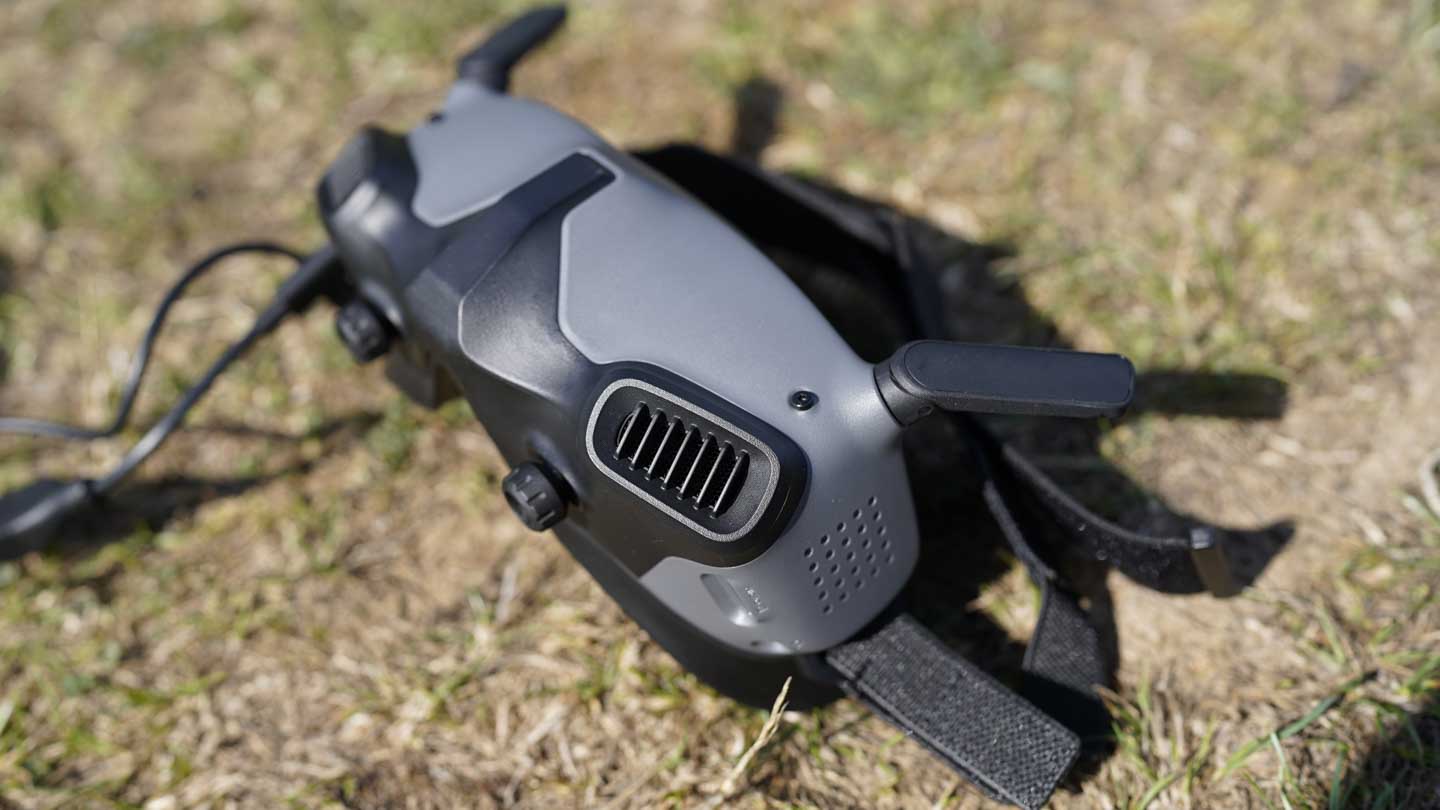Before starting the flight, you must brief your spotter if you’re using the Goggles V2. Your spotter is your line of sight and is required for you to meet the UK drone laws. Once they are briefed and reassured that the batteries won’t last that long. It’s time to take off.
https://youtu.be/XQ513SoNfOo
Take-off and landing are all easy enough. Double tap the red button on the motion controller, and the drone is armed; a long hold takes off, ready for flight. The Motion Controller 2 features a trigger that works as an accelerator or goes forward button. Pull it back, and the AVATA goes forward release and stops.
With the drone hovering after launch, I try the usual checks, tilt left, and the drone rotates left, tilt right, and the drone rotates right. Then tilt the controller up and the camera moves up, tilt down and the camera tilts down. So far, so good.
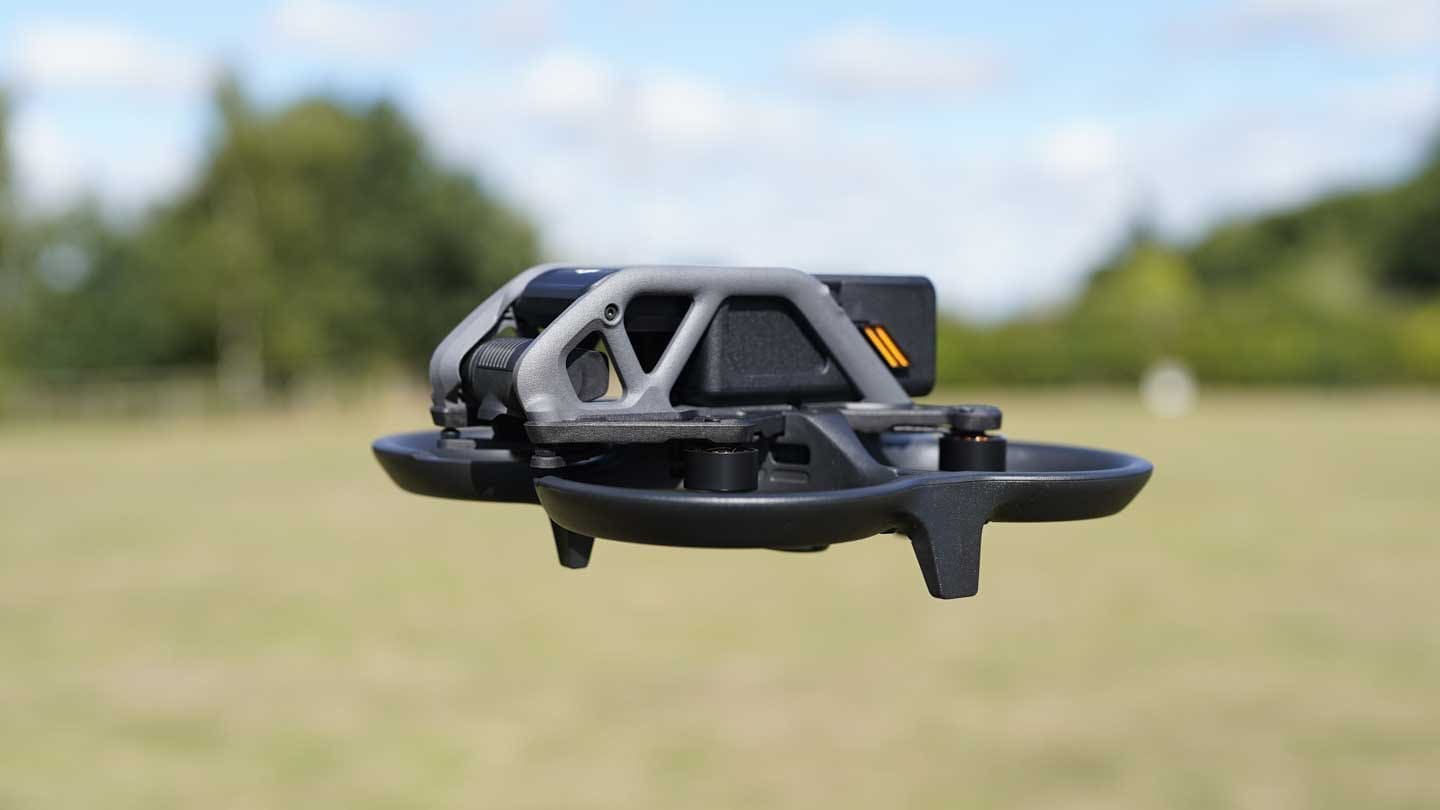
Using the Motion controller, you can’t fly left or right; the control design is meant to be more intuitive, but switching from a dual stick to this motion control system will take a bit of getting used to.
Still hovering, it’s time to get some height, I’ll state now that like the FPV this isn’t a sudate and quiet drone but it is less threatening than the FPV. With a small pull on the trigger, the drone edges forward, tilt back, and the drone starts to rise, tilting the controller to 90º so that its horizontal enables an almost vertical take-off. I’m currently in Normal mode with only a slight trigger press. As I increase the trigger pressure, the speed of the AVATA increases as it ascends.
Once above tree height, I do a quick lap of the field, and it’s obvious through talking to my spotter that the latency between the goggles and the drone camera is minimal. Getting a little more confident, I increase the speed and start to raise and lower the drone; this feels far more like a game than actually flying a drone.
After familiarising myself with a few short flights of around five minutes a piece, I’d burnt through the three batteries, so I stopped for lunch and left the batteries recharging, which proved optimistic as an hour later only one bar on one battery seemed to be alit. As each battery is depleted, the goggles show a warning the RTH will activate in so many seconds. In all cases, I left the drone to make it’s way back to the take-off spot.
Once the batteries had recharged, which took slightly more than nine hours for the three batteries, about 3 hours each, it was time to test the use of the goggles. Again with the spotter at the ready, I used the Motion Controller to navigate through a gate and through the garden; the live view feed and the over-enthusiastic spotter guided me through the environment without issue. This is like playing a VR computer game rather than being outside in the real world.
Controlling the drone this way with the Goggles and Motion Controller is on another level compared to stick controllers. The use of Motion is intuitive and easy to understand once you make the break, and the potential is massive.
Seeing the live view through the goggles you have a small dot in the centre of your vision, essentially you tilt and rock the controller while pulling the trigger to get the drone to go where you want it to go. It’s like pointing your finger in the way you want it to fly and it does.
Again battery was out, and it was time to test the recording; the first outing with the AVATA had already shown that flying as fast as you can while recording, wearing the goggles and using the motion controller while a lot of fun would burn through the battery at incredible speed.
However, with the main bulk of the test completed and quite a bit of recharge time, it was time to fire up the camera and film some top-notch 4K video at 60fps.
A quick take-off, trigger down, and the drone shoots up into the sky. I’m still not 100% proficient with the flight control using the motion controller, so there’s quite a bit of spinning involved through the take-off.
Once at a decent height and checking, the spotter can still see the thing; it is small, after all, I completed what I hoped was an ultra-speedy lap of the field from above.
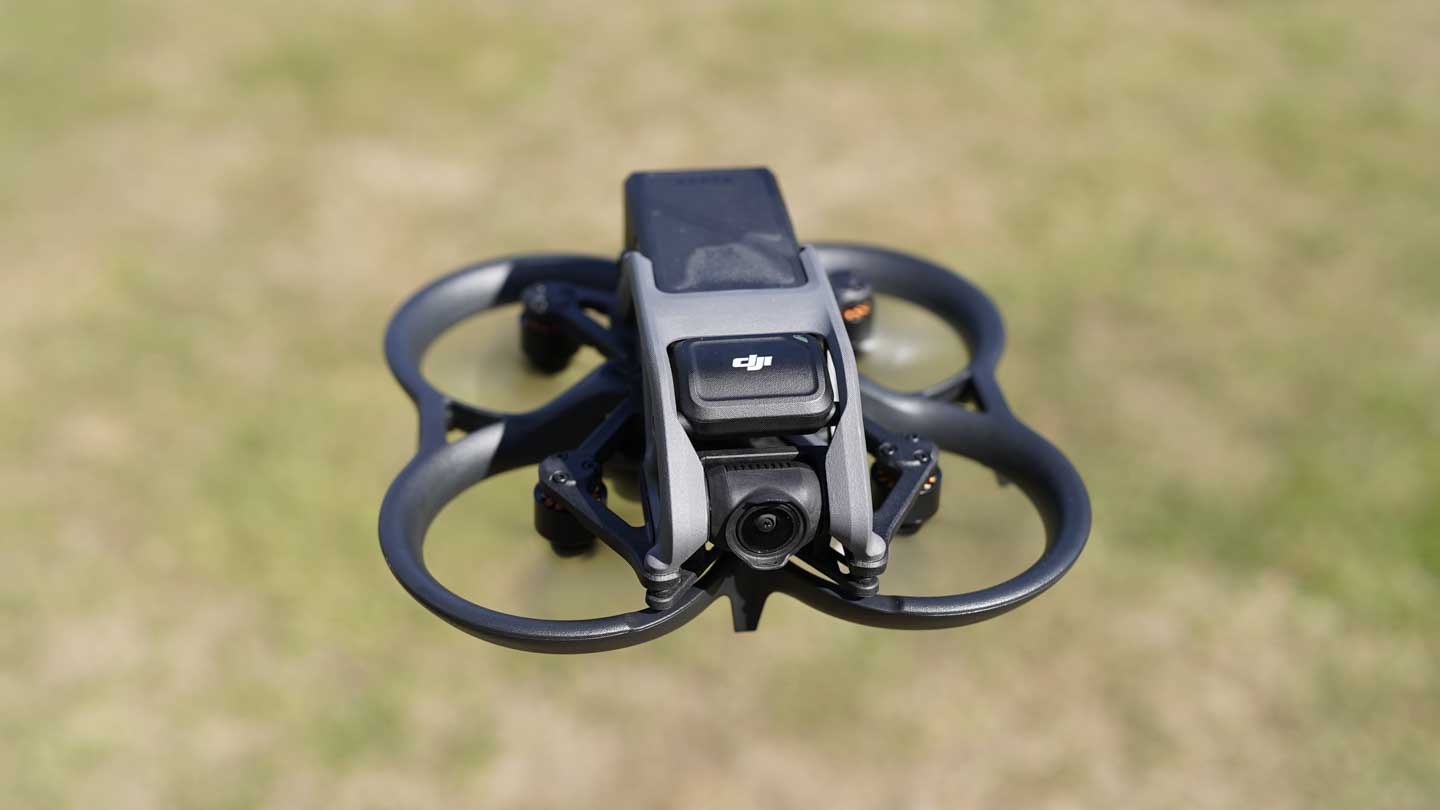
After a quick circuit and mess/play around in the sky, the battery low warning appeared, and RTH kicked in. Land, battery swap and again into Sports mode and a few more laps, which is incredible fun, before low battery and RTH, about five minutes this time, but it felt like 30 seconds, battery swap, take off, and this time normal mode and 4K quick lap or two, battery low and RTH.
The total time out for most outings with three batteries is 45 minutes, that’s arriving, setting up and flight and packing away. Whereas I’m quite sure I get close to that with one battery with the Mavic 3 Pro.
There is a difference, of course, between the Mavic 3 Pro, Mavic Mini 3 Pro and the DJI AVATA. The other two are creative, serious drones for imaging people, the DJI AVATA is not. The DJI AVATA is fun, it shoot great footage, even if that footage is short because the battery runs down quickly, but essentially that’s not the point.
